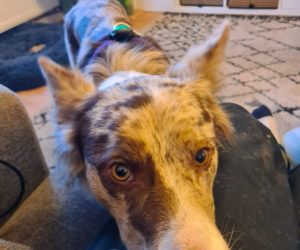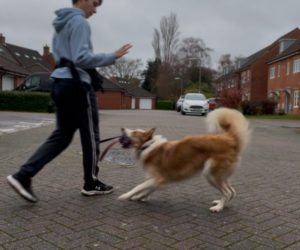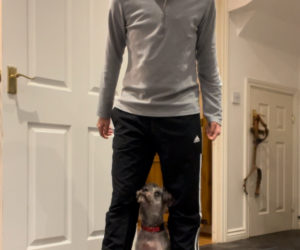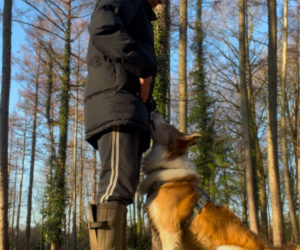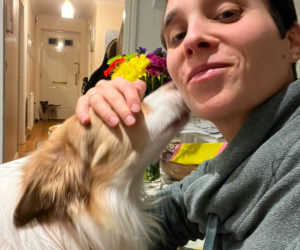Herding Dogs & Car Chasing: A Real-Life Story
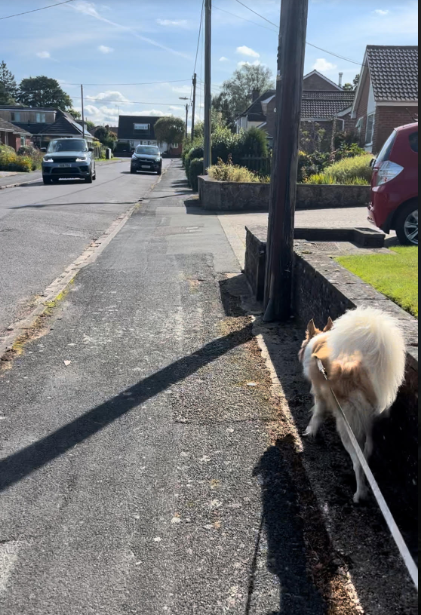
Does your herding dog leap/lunge/bark/spin at traffic when you walk them by the road? If you are struggling with this issue, you’re not alone! In this post, I’ll share a personal experience with one of my dogs, Budweis, who went through a phase of intense car-chasing. I’ll break down what worked, what didn’t, and how I can help you navigate similar challenges with your dog.
The Problem: When Car Chasing Becomes a Habit
Budweis started looking at cars a little bit too intently at about 12-13 weeks old. At this point, we suspended road walks and started working on some skills, and it got much better! However, after Budweis sustained an injury and was prescribed some crate rest (which meant a break from his regular exercise), the behaviour returned with a vengeance. He started leaping and lunging if he even heard a slow-moving car on my estate. It was not fun! I kind of hoped that the behaviour would resolve itself when his normal exercise regime resumed. But, alas, it did not.
This is a situation many dog owners can relate to—something that was once manageable spirals out of control, leaving you unsure of how to proceed.
Why I Avoided Traditional “See Car, Get Treat” Methods
One common approach to managing car-chasing is to reward the dog with treats when they see a car. While this may work for some dogs, I chose not to take this route with Budweis! Why? Because I didn’t want him to associate cars with a chance to engage with me and get fed. I wanted him to become indifferent to cars, rather than expecting interaction whenever one appeared. For me, it was important that Budweis learned cars are simply part of the environment, not something to focus on—whether positively or negatively.
Another common piece of advice may be to let the dog watch cars, so they “get used to them”. This is not something I recommend! Letting your herding dog stare at traffic is only going to help them get better at staring at traffic.
Limiting Exposure to Cars: Not Always Convenient, But Effective
One of the most critical steps I took in managing Budweis’ car-chasing was limiting his exposure to traffic. Was it convenient? Absolutely not. But I was fortunate to be in a position where I could adjust our walking routes and environments to reduce the number of cars he encountered. We drove a full 2 minutes to get to our usual walking spot. I covered his car crate so he couldn’t fixate on traffic while we were driving. By avoiding busy streets and unnecessary exposure, I was able to set Budweis up for success.
Starting with Small, Manageable Steps
The next key strategy was gradually reintroducing Budweis to cars in a controlled way. I started in a field where he could hear cars but not see them (if he saw them, he would fixate), and I focused on engaging him with other activities—primarily nosework/sniffing/food scatters, and exploring the environment with his nose to the ground. This allowed Budweis to focus on the world around him rather than the cars passing by in the distance. He knew they were there! They just weren’t important.
Another important point is that I didn’t push him into situations he wasn’t ready for: I didn’t take him to places where I knew his behaviour would escalate, only to manage it with treats. Instead, I carefully selected locations where I knew he could stay calm and exhibit the behaviours I wanted to see, like sniffing and ignoring traffic. When unexpected cars appeared, I used well-rehearsed management techniques to keep him from reacting.
Gradual Progress and Mindful Walks
Today, I’m incredibly happy with how Budweis is doing. He’s pretty indifferent to cars, and while I’m still mindful of where we walk (walking next to a busy motorway would probably be challenging), he’s able to walk down any road I might need him to without concern.
There’s no one-size-fits-all approach to behaviour issues. Every dog and every set of circumstances are different: it’s about finding what works for your unique situation.
How I Can Help You and Your Dog
As a dog trainer, my goal is to help dog owners tackle these kinds of challenges in a way that works for their individual dog and lifestyle. Whether your dog is chasing cars, struggling with leash manners, or facing another behavioural issue, I’m here to provide tailored strategies that go beyond cookie-cutter methods. Like baking a cake, there are many ways to achieve the result you want—my job is to find the recipe that suits you and your dog best.
If you’re ready to transform your dog’s behaviour and make your walks more enjoyable, reach out today! Let’s work together to create a personalized plan that works for you and your dog.
Want to learn more? Contact me or check out my other blog posts for tips on solving common dog behaviour problems!
See how we can help
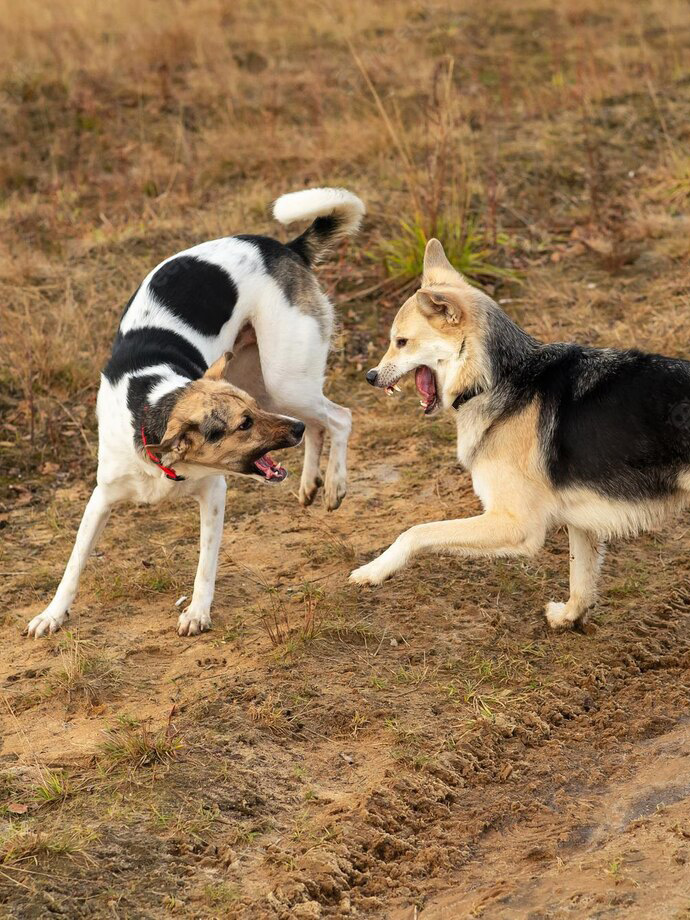
Behaviour rehabilitation
Many behaviour problems are linked to how your dog is feeling. Fear, anxiety and pain all influence how well your dog is able to cope with his environment and routines.
Dog training
Dog training is offered for all dogs: puppies, adolescents, seniors and newly adopted rescue dogs.

Book A Free Consultation Call
Unsure on where to start? I don't blame you, finding the right dog trainer can be a challenge in itself. Book a FREE 30 minute consultation call to find out more about how I work and how I can help you with your dog!
Given the dedication required to provide each dog and their owner with the personalised attention and training they need, I am only able to work with a limited number of clients at any given time. I sincerely believe in offering my services only when I am confident in my ability to deliver the outcomes you're seeking for your dog.
Related posts
Tips & Tricks is dedicated to providing every mama and papa with exclusive advice and information on how to take care and deal with their furry friends.

